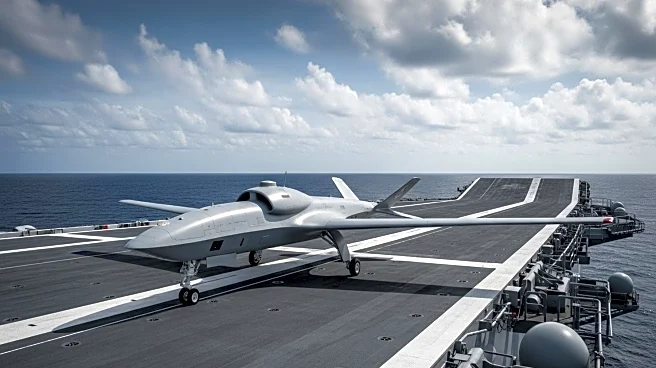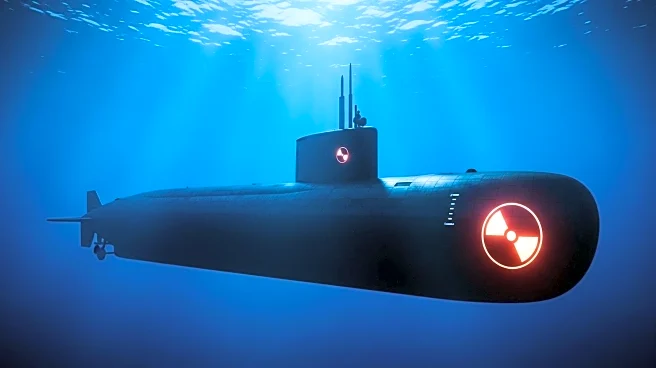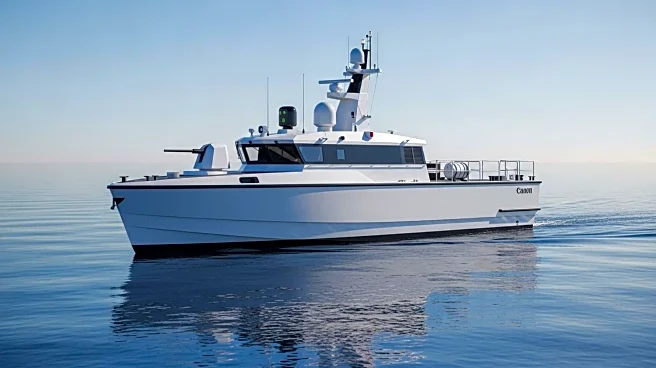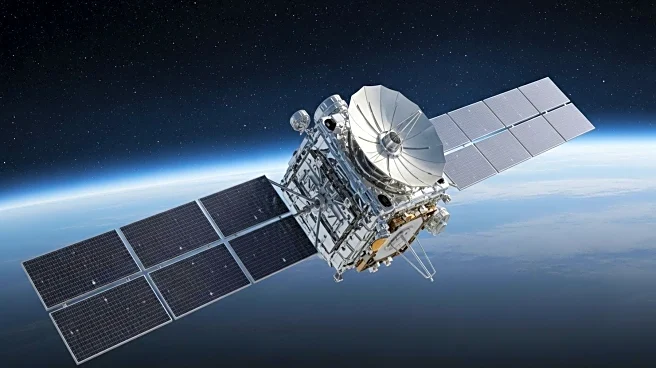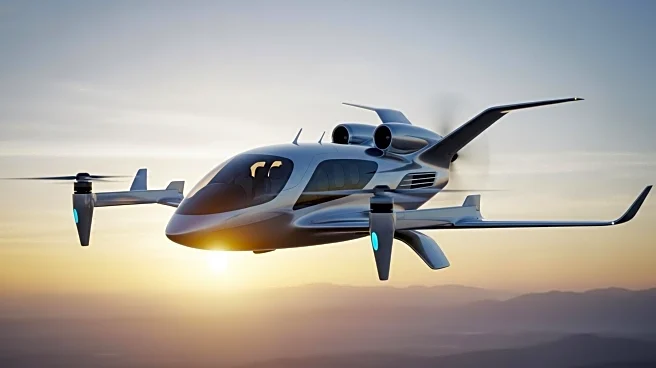What's Happening?
Parallel Flight Technologies, a California-based startup, has been awarded a $3.74 million Sequential Phase II Small Business Innovation Research (SBIR) contract by the U.S. Office of Naval Research. The contract is aimed at developing a maritime version of the company's Firefly hybrid-electric, heavy-lift unmanned aerial vehicle (UAV). The project will involve modifications to the Firefly drone to enable operations from naval vessels, including enhancements for heavy fuel compatibility, advanced deck-landing sensors, saltwater corrosion protection, flotation devices, and a deck-locking mechanism. Additionally, the drone will undergo expanded beyond-visual-line-of-sight (BVLOS) testing. The modified Firefly is expected to support advanced naval missions such as mine countermeasures, underwater vehicle detection, and hydrographic surveys.
Why It's Important?
This development is significant as it highlights the growing interest and investment in hybrid-electric UAV technology within the defense sector. The U.S. Navy's contract with Parallel Flight Technologies underscores the potential of hybrid-electric drones to enhance naval operations, particularly in challenging maritime environments. The Firefly's ability to carry substantial payloads for extended periods makes it a valuable asset for missions requiring endurance and versatility. The contract also reflects a broader trend of integrating advanced UAV technologies into military operations, which could lead to increased efficiency and effectiveness in various defense applications. The success of this project could pave the way for further adoption of hybrid-electric UAVs in both military and civilian sectors.
What's Next?
As Parallel Flight Technologies progresses with the development of the maritime Firefly drone, the company will likely focus on meeting the specific requirements outlined by the U.S. Navy. This includes ensuring the drone's compatibility with naval operations and its ability to perform in harsh maritime conditions. The successful completion of this project could lead to additional contracts and collaborations with other branches of the military or government agencies. Furthermore, the company may explore opportunities to adapt the technology for civilian applications, such as agriculture and heavy sensor missions, expanding its market reach beyond defense.
Beyond the Headlines
The collaboration between Parallel Flight Technologies and the U.S. Navy highlights the increasing importance of innovation in defense technology. The hybrid-electric propulsion system of the Firefly drone represents a shift towards more sustainable and efficient energy solutions in military applications. This project could also influence regulatory and policy discussions around the use of UAVs in maritime environments, potentially leading to new standards and guidelines for their deployment. Additionally, the success of this initiative may encourage other startups and companies to invest in hybrid-electric and other advanced UAV technologies, fostering further innovation in the aerospace and defense industries.



